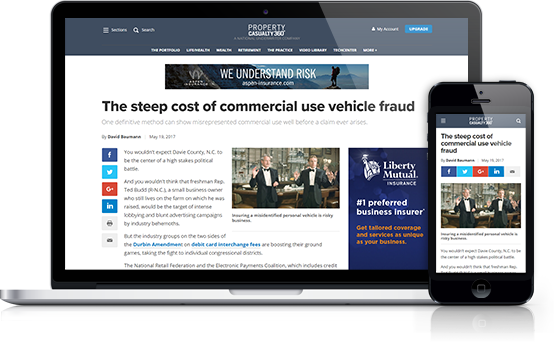Nearmap’s AI-powered models approved in 27 markets
Insurers can leverage the predictive scores to help price risk.
 Well, it is official: the ICD-10 CM and procedural coding system will be implemented in the United States with dates of service effective October 1, 2014. The introduction of ICD-10 has sparked a great deal of confusion and alarm. Therefore, it is imperative to acknowledge its value and provide reassurance that this is indeed a benefit for patients, as well as the property & casualty (P&C) industry.
Well, it is official: the ICD-10 CM and procedural coding system will be implemented in the United States with dates of service effective October 1, 2014. The introduction of ICD-10 has sparked a great deal of confusion and alarm. Therefore, it is imperative to acknowledge its value and provide reassurance that this is indeed a benefit for patients, as well as the property & casualty (P&C) industry.
ICD-10 introduces more than 68,000 codes for ICD-10-CM, which is used by hospitals and other healthcare facilities to describe and document the patient clinically. Also included are more than 75,000 codes for ICD-10-PCS. The increase in codes can certainly seem overwhelming; however, they were introduced to specifically improve the evaluation of medical care, as well as enable specificity of patient diagnosis, rather than prescribing to a general area of concern. It is this specificity that can be leveraged to better treat patients, by clearly articulating the nature of the illness. For P&C insurers, this significant increase in detail allows us to ensure the patient is being treated in accordance with the nature of the claim. So let’s discuss what all of this means, and why ICD-10 is actually a good thing for those of us working within P&C insurance.
Application In Claims
In the P&C industry, we can no longer use the cloak that we are not subject to the Health Insurance Portability and Accountability Act (HIPPA), and therefore ICD-10 usage is optional. The problem is that legislation introduced since HIPAA was enacted for electronic transaction security—the Health Information Technology for Economic and Clinical Health Act (HITECH)—requires our industry to pay careful attention. In addition, the medical bills are submitted by medical providers, which are covered entities by HIPAA. These covered entities are currently required to submit ICD-10 codes as of October 1st of next year. Thus, if the P&C industry is unable to consume the bills submitted by the covered entities, then the medical bills will be virtually impossible to review and pay appropriately.
Already have an account? Sign In Now
NOT FOR REPRINT
© 2025 ALM Global, LLC, All Rights Reserved. Request academic re-use from www.copyright.com. All other uses, submit a request to [email protected]. For more information visit Asset & Logo Licensing.
Insurers can leverage the predictive scores to help price risk.
New car buyers are in a financial squeeze.
New technology juggles storm water risk, urbanization and climate change.
Report
Sponsored by ePayPolicy
Independent Agents on the Rise: A Dual Impact on Agents and Insurance Providers
The insurance landscape is shifting, with independent agents playing an increasingly vital role. How does this impact insurance providers and agents alike? Explore the key factors driving this trend and what it means for your business.
Guide
Sponsored by ePayPolicy
10 Payment Processor Must-Haves for Insurance Carriers
Insurance carriers need more than just a basic payment processor. The right solution enhances security, improves efficiency, and ensures seamless transactions for policyholders and agents. This checklist highlights 10 key factors every carrier should consider when choosing a payment processor to stay compliant, streamline operations, and deliver a superior customer experience.
Guide
Sponsored by CoreLogic
How Digital Automation Operates in Today's Property Claims Lifecycles
Discover how digital automation is helping property insurance carriers simplify and expedite the claims process and overcome challenges posed by a growing number of claims in recent years.
 Copyright © 2025 ALM Global, LLC. All Rights Reserved.
Copyright © 2025 ALM Global, LLC. All Rights Reserved.



